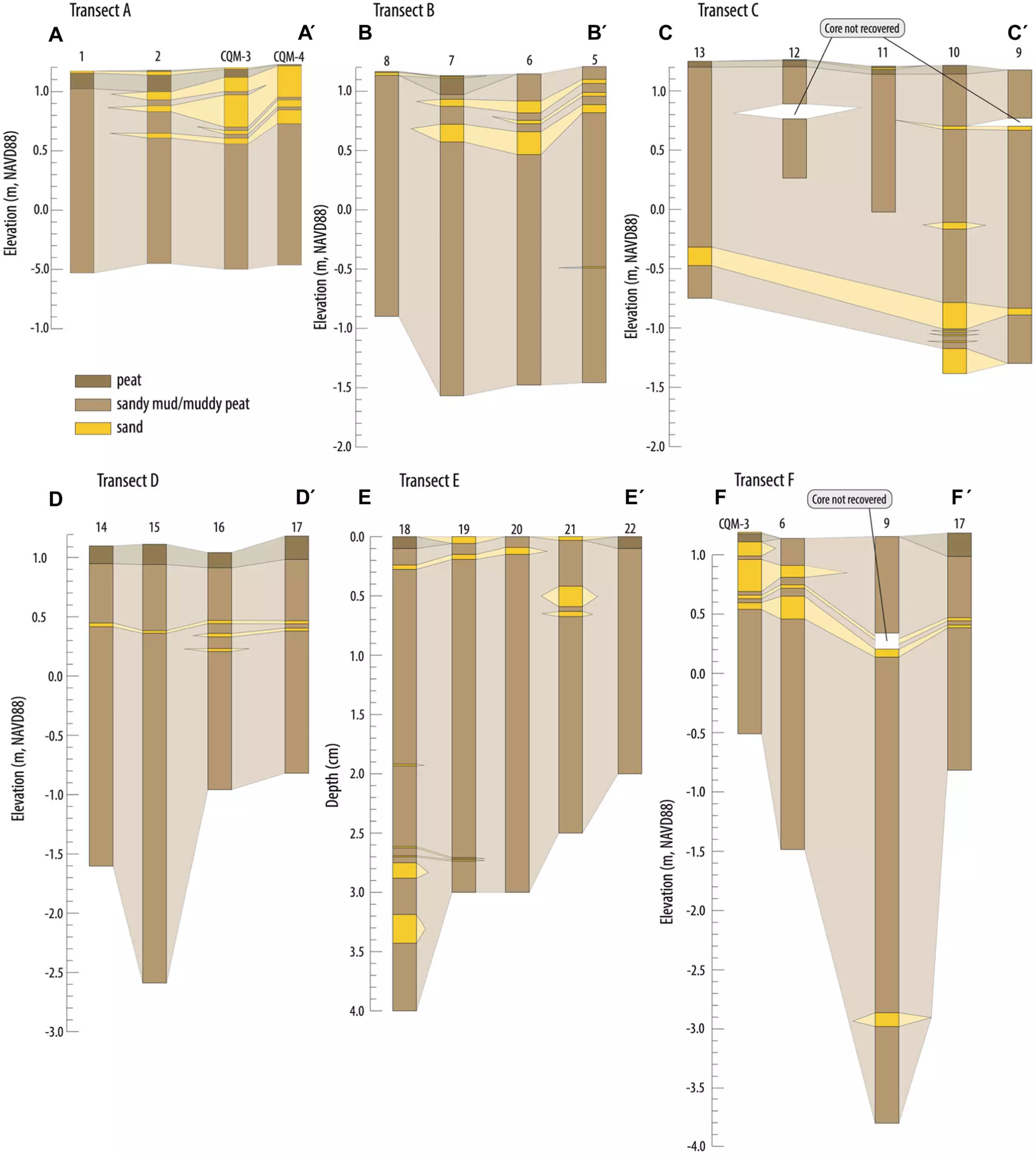An innovative study led by researchers from Rutgers University-New Brunswick has recently made a groundbreaking discovery regarding the history of hurricanes along the New Jersey coastline. Using cutting-edge techniques to analyze coastal sediments, the team found traces of storm deposits spanning over 400 years. This research is not just an exploration of the past; it holds pivotal implications for understanding how changing climatic conditions might influence the frequency and intensity of future storms.
The study stands out as a remarkable application of geological methods, extracting valuable historical data from sediment layers located beneath the wetland surfaces of Cheesequake State Park. The evidence they unearthed confirms the existence of significant storms, including a hurricane dating as far back as 1584—years before any formal weather recording systems were established. The implications are profound, positing that the journaling of nature’s fury predates the technology we currently rely on to monitor inclement weather.
A New Lens on Storm Analysis
Traditionally, researchers have depended on tidal gauges and historical records—like shipping logs and newspaper accounts—to assemble an understanding of previous hurricanes. However, these archival methods have their limitations, often failing to capture a comprehensive picture of severe weather events that occurred far in the past. Kristen Joyse, the study’s lead author, emphasizes the shortcomings of current methodologies, urging for an expanded geological timeline to gain deeper insight into natural disaster patterns.
What the Rutgers team demonstrated was an innovative approach that combined geological stratigraphy with modern analytical techniques to sift through sediment cores. These cores, some reaching depths of eight feet, were collected from various sites where geological layers had been preserved. The meticulous analysis involved examining grain size, organic content, and even microfossil information, enabling researchers to differentiate storm-induced sediment from regular wetland deposits.
Connecting Historical Storms with Modern Data
A particularly compelling aspect of this study is how researchers juxtaposed their sediment findings with contemporary tidal gauge data. By this comparative analysis, they validated eight sediment cores that documented significant storm activity. Painting a clearer picture, several of these cores indicated storms that occurred prior to the installation of any tidal gauges, underscoring the richness of geological records.
The sediments captured not just the infamous Hurricane Sandy of 2012 but also floods linked to historical hurricanes like the one in 1788 and the notorious storms of 1938. However, the study did reveal a limitation: not all extreme weather events documented by tidal gauges manifested in the geological record. For instance, while there were multiple instances of extreme water levels recorded by gauges, sedimentation failed to preserve many of those events. This discrepancy raises critical questions about the resilience of certain storms in the sedimentary record versus others, inviting further inquiry into the conditions that allow some storms to leave their mark over time.
Implications for Future Research and Climate Understanding
The findings from this study are not merely academic; they carry substantial implications for our understanding of climate change and its impact on hurricane frequency. As global temperatures continue to rise, the frequency and intensity of storms are likely to shift. Understanding how past climate conditions influenced hurricane behavior provides invaluable context for predicting future storm patterns.
This research opens up new avenues for exploration, including queries surrounding the factors that determine which hurricanes get recorded in geological formations. Joyse summarized this succinctly, noting that the study allows for enhanced hypotheses regarding how external variables could modify storm frequency in the future.
The collaboration among scientists from various institutions—including Rutgers faculty members and experts from Nanyang Technological University—ensures a multi-dimensional approach to exploring these pressing topics. Advanced methodologies such as the one employed in this study could potentially revolutionize how we study not just hurricanes but also other extreme weather phenomena.
Overall, this significant research effort presents a thrilling new chapter in the ongoing quest to understand our planet’s tumultuous weather history. It is a nod to the complexities of natural systems and an urgent reminder of the ever-shifting landscape of climatic conditions influencing our world today.


Leave a Reply